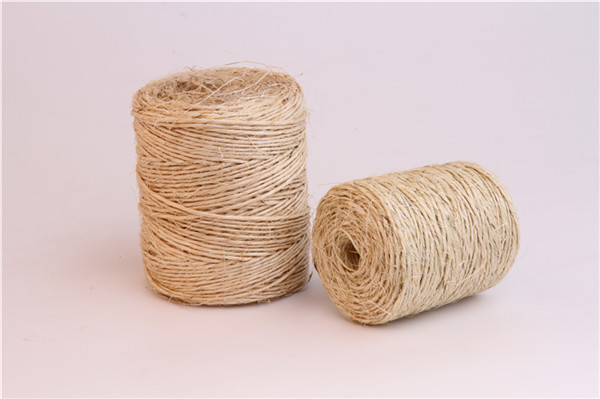Keywords: green packaging; evaluation system; LCA
As an important part of the production and circulation of commodities, packaging has been greatly developed along with the continuous advancement of science and technology and the development of material civilization. Packaging waste has exerted tremendous pressure on environmental protection, and now it has set off a worldwide surge. The fundamental purpose of the “green†wave is to maximize resource utilization and minimize negative impact on the environment; it is used in the packaging industry. It is to make the packaging materials “green†and to moderately simplify the packaging of goods.
1 The practical significance of green packaging The so-called green packaging refers to the packaging measures that are harmless to the ecological environment and human health, can be reused and recycled, and can be used for sustainable development; in fact, it is the greening of packaging materials during the packaging process. , Follow the internationally popular 3RID principles when selecting materials.
Green packaging is the core of the modern green wave - the key technology of the green economy. Because it not only caters to the new wave of green marketing in the world, it is also an important part of green design and management in the green industry; more directly, it helps China's products to break out of the “green†barriers to international trade and improve the economic efficiency of enterprises. .
2 Green Packaging Implementation Method Green packaging is a large-scale system engineering. It not only needs to develop and apply green packaging technology, but also establishes appropriate management, evaluation, policies and regulations, and other appropriate measures. Therefore, the overall planning of green packaging There should be a framework that is compatible with technology, applications, management, evaluation, policies, and laws as shown in Figure 1.
Green Packaging Implementation System ┌────┬──────┼────┬────â”
Technology System Application System Evaluation System Policy System Legal System
Figure 1 Schematic diagram of green packaging frame
2.1 The green packaging technology system allows greening of packaging materials under the framework of 3RID to research and develop new green packaging products. Its main content is as follows:
a. Research and development of non-toxic, non-polluting (including the material's own production process), recyclable, degradable packaging raw materials.
b. Alternative technologies for studying harmful ingredients in current packaging materials, as well as alternative technologies for materials that consume large amounts of resources.
c. Optimize the design of the packaging structure, reduce the weight of the packaging, reduce the material consumption, and eliminate excessive packaging.
d. Increase the recycling of packaging waste.
2.2 The application of green packaging technology to the application and promotion of new types of green packaging technology must be achieved through certain measures to ensure that the main planning and related processes, equipment and materials are in place and implemented, and to ensure green according to a certain corresponding program Promotion of packaging standards. The specific content should include the provision of qualified green material supply channels, the identification of green quality standards, and related regulations such as pre-processing and post-use recycling instructions.
2.3 Management of Green Packaging Technology For packaging, it is not enough to simply follow the principle of “saving energy, recycling, and recyclingâ€. Enterprises should have a strategic vision for development and make full use of China’s accession to the WTO as a good opportunity. The management system of green packaging technology management, and the classification of qualifications and corresponding label packaging, rushed out of international trade in the past using "green" barriers to limit the export of Chinese products. And through the green packaging management system to guide companies to improve environmental behavior, to win a good market image and increase the company's market competitiveness, so as to achieve a win-win good results.
2.4 Green Packaging Technology Evaluation System (LCA)
This is a problem that this article would like to focus on. The success or failure of green packaging for the establishment and operation of a company requires systematic tracking and evaluation. Therefore, it is very important to establish an appropriate comprehensive and objective green evaluation system.
2.4.1 Myths of traditional assessment methods The misconception of traditional assessment methods is that people make decisions based on the observed environmental phenomena and environmental theories that are consistent with the perception, and then adjust them according to the observed environmental phenomena. However, it is worth noting that what is seen is not necessarily all factors and causalities that affect the environment, but is likely to be part of it, which makes it difficult to avoid one-sidedness in decision-making.
People naturally have the following observations: Compared with cans, glass bottles have less environmental pollution than plastic bottles. It may be correct in the local context, but from the perspective of the entire life cycle, this conclusion may be biased. Table 1 shows the degree of pollution of various packaging containers.
Table 1 Degree of Environmental Pollution in Various Packaging Containers
It is no surprise that contradictory results are obtained from different perspectives on the same issue. It is very obvious that the improvement of this environment may lead to the deterioration of another environment. Therefore, it is necessary to find a standardized method that can comprehensively and objectively evaluate different environmental issues comprehensively. The life cycle method emerged as the times require.
2.4.2 Life Cycle Assessment Method (LCA)
LCA is an abbreviation for English (Life Cycle Assessment), translated as life cycle analysis and assessment method. The more authoritative is the definition of the American Society of Poisons and Chemicals; the method of aggregating and evaluating the potential threats and impacts of all inputs and outputs of a product (or service system) on the environment throughout its entire life cycle. It embodies the principle of sustainable development in the product, and the goal is to establish and minimize the appropriate evaluation methods for the cumulative environmental burden of the product throughout its life cycle.
When assessing with LCA, the first is to clarify the goals and scope; followed by input and output; and again to determine the function; the subsequent analysis is based on the premise to meet the corresponding function, and there is operability. That is, it is necessary to clearly define the specific issues (such as the greenhouse effect, the destruction of the ozone layer, acid rain, air pollution, water pollution, land desertification, reduction of forest area, extinction of species, etc.) of the LCA in the evaluation, and list the entire system. The data analysis of the process input (energy consumption situation) and the output (disposal) are conducted. If we only focus on the immediate environmental phenomenon, it is very easy for us to conclude that the container issue discussed earlier is just waste and resources, while ignoring the potential greenhouse effect, ozone layer destruction, acid rain and other environmental issues connected with it.
2.4.3 Problems with the application life cycle assessment method In terms of theory, LCA is an ideal evaluation tool for achieving sustainable development. There are many problems in implementation, such as: cost/benefit issues; standardization of evaluation methods; data can be added Sexual issues and reliability issues. With the help of powerful data processing capabilities of computers, the key is how to solve the problems of input and output data lists. Developed countries such as Europe and the United States have already developed specialized software, but they cannot be applied because they are far from our national conditions. At present, the method of assessing influence tends to use the weight factor method of fuzzy mathematics. It is to establish a corresponding connection to a specific environmental problem that has been collected in the previous round, and to score different factors and make it incomparable. The impact of pollution is quantified as a comparable parameter and a mathematical model corresponding to it is established to conduct a comprehensive assessment and a decision that meets the actual situation is obtained.
2.4.4 Application examples and implications of the life cycle assessment method According to reports, in the 1980s, a discussion on disposable diapers was held in a state in the United States. At that time, public opinion believed that this diaper was a waste of resources and increased the landfill pressure of the garbage dump. The state legislature promulgated a ban on the use of disposable baby diapers, but the results are thought-provoking. Because of the large number of repeated use of diapers, resulting in clean water and
Sisal & Jute Twine
Product Features
Made from natural agave fiber, sisal rope is both economic and biodegradable.Sisal rope is easy to grip and knots well, moderate strength and pliability. Fair to good surface and internal abrasion resistance. It is lighter in color, softer and more pliable than manila.
Jute fibers are twisted into a smooth,strong,moisture-resistant Twine.It`s easy to tie and holds knots well.The twine is soft enough that it won`t cut the edges of a package.This material is Softer than sisal,jute is an economical household string.It is easy to handle and holds knots securely.
Product Application
Bundling rope for farming,shipping and DIY household projects. this general-purpose rope is used for agriculture and shipping. It is great for home, farm and utility use. It is also used for zoological barriers, ornamental purpose, nursery supply, tie-down and tent line.



FAQ:
Q: How about payment terms?
A: 30% TT deposit + 70% TT against the B/L copy within 3 days.
Q.:What about the lead time?
A: We need 3-7 days to get the samples ready, for bulk goods, it will cost 15-60days,up to the quantity.
Fine Sisal Twine,Fine Jute Twine,Natural Twine,Natural Jute & Sisal Twine
ROPENET GROUP CO.,LTD , http://www.cordnet.com